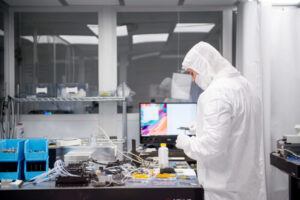University of Maryland will be a research center for 3D bioprinting
- April 12, 2017
Published on 4/12/17 in Technical.ly Baltimore
Center for Engineering Complex Tissues
The University of Maryland is taking the lead in a new effort to 3D-print human body parts.
The university announced Tuesday that its bioengineering department will head up the NIH-backed Center for Engineering Complex Tissues.
Rice University and Wake Forest are also partners on the center, which is funded with a $6.25 million NIH grant.
The center will look to advance bioprinting, a process to create cell patterns using 3D printing. The application shows promise to create tissue and organs that can be used in transplants. (We’ve long followed a company in Philadelphia that is working in the space, BioBots.)
“By bringing together experts in bioengineering, biomaterials, and additive manufacturing, CECT will serve a critical role in fostering the kind of technological advancement that has the potential to transform how bones, tissue, and organs are repaired or replaced,” John P. Fisher, a UMD College Park bioengineering professor who will serve as the director of the center, said in a statement.
Curt Civin, who is director of the Center for Stem Cell Biology and Regenerative Medicine at the University of Maryland School of Medicine in Baltimore, is also collaborating.
Previous post
University of Maryland to Lead NIH-Funded Center for Engineering Complex Tissues
You may also like



